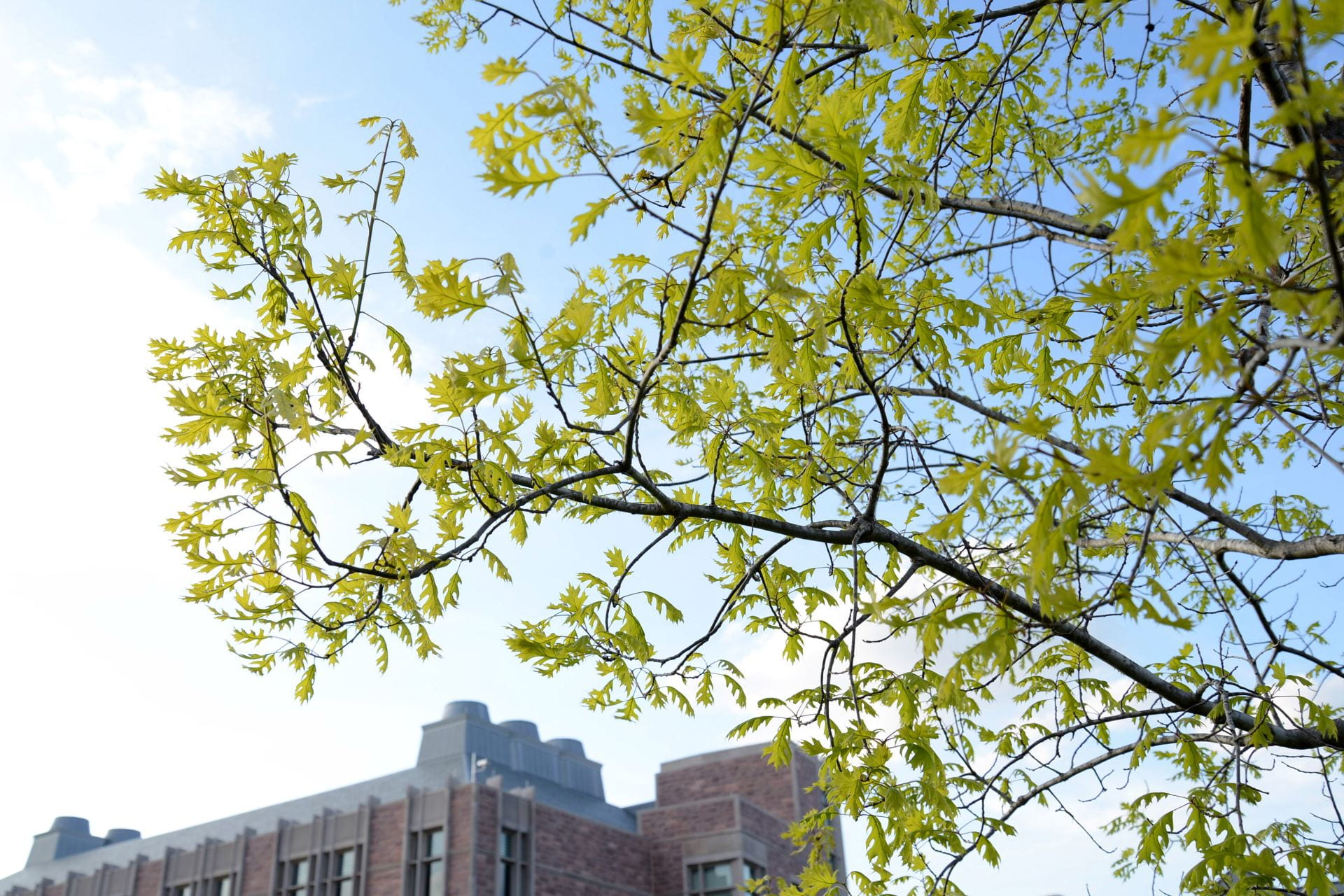Shumard Oak
Arbor Walk #103, TreeKeeper ID #5795

Also known as the Swamp Red Oak, this large oak species is native to much of the Southeastern U.S. and the Ohio River Valley. The Shumard Oak is planted in urban areas for its tolerance in water availability and air pollution, as well as its preference for alkaline soils. Every 2-4 years, the tree produces one-inch acorns that are popular among wildlife. Able to live up to 200 years, its leaves are medium to dark green and turn a brownish-red in late fall. Despite its longevity, this tree is susceptible to several diseases and pests, including leaf spotting, blight and mites.
The Shumard Oak is a member of the subgenus of red oaks. These oaks are distinguishable from other oaks from their awns (soft bristles) at the ends of leaf lobes, their orange hairs on the leaf underside at vein intersections, and their dark, ridged bark.
| Common Name | Shumard Oak |
|---|---|
| Latin Name | Quercus shumardii |
| Indigenous Name(s) | |
| Cultivar/Variety | |
| Commercial Name |